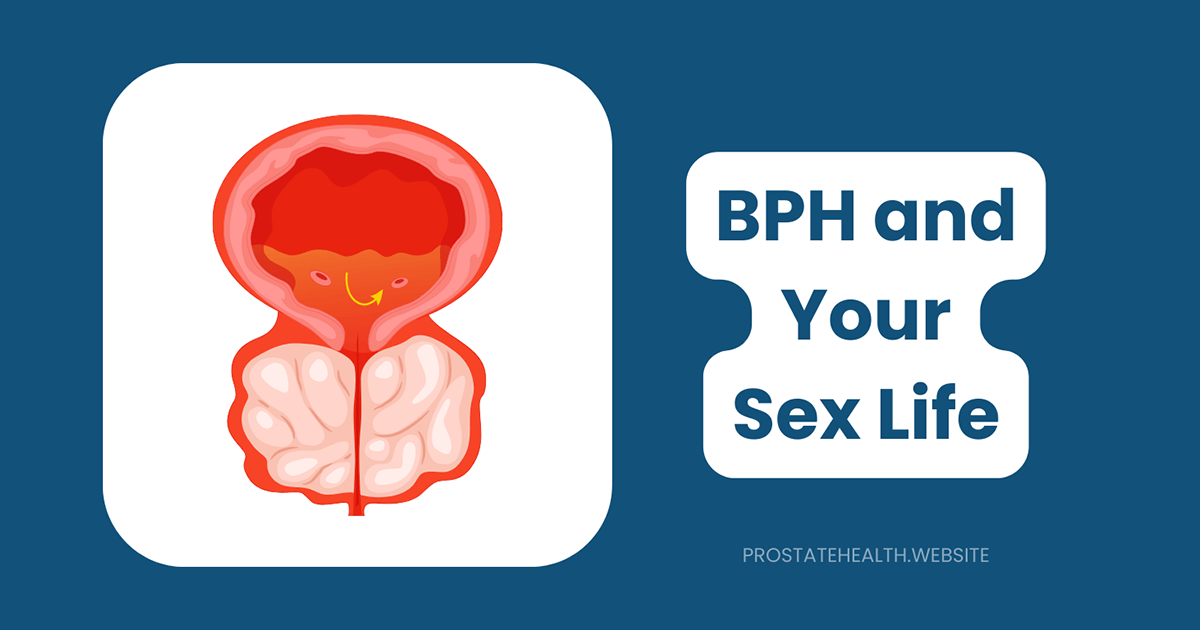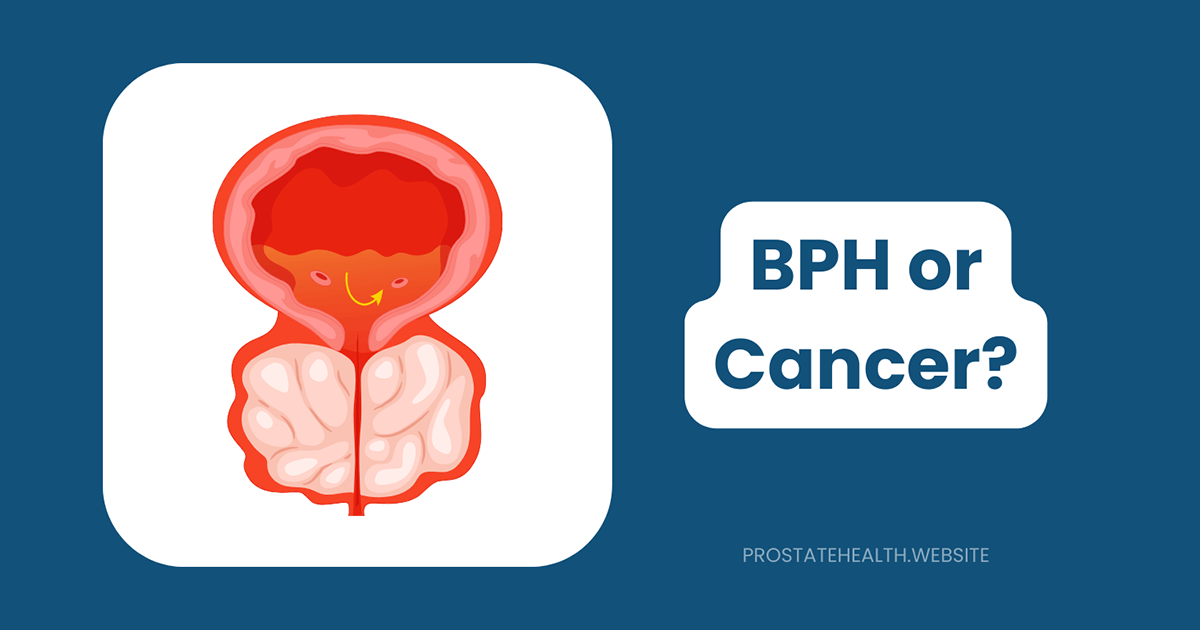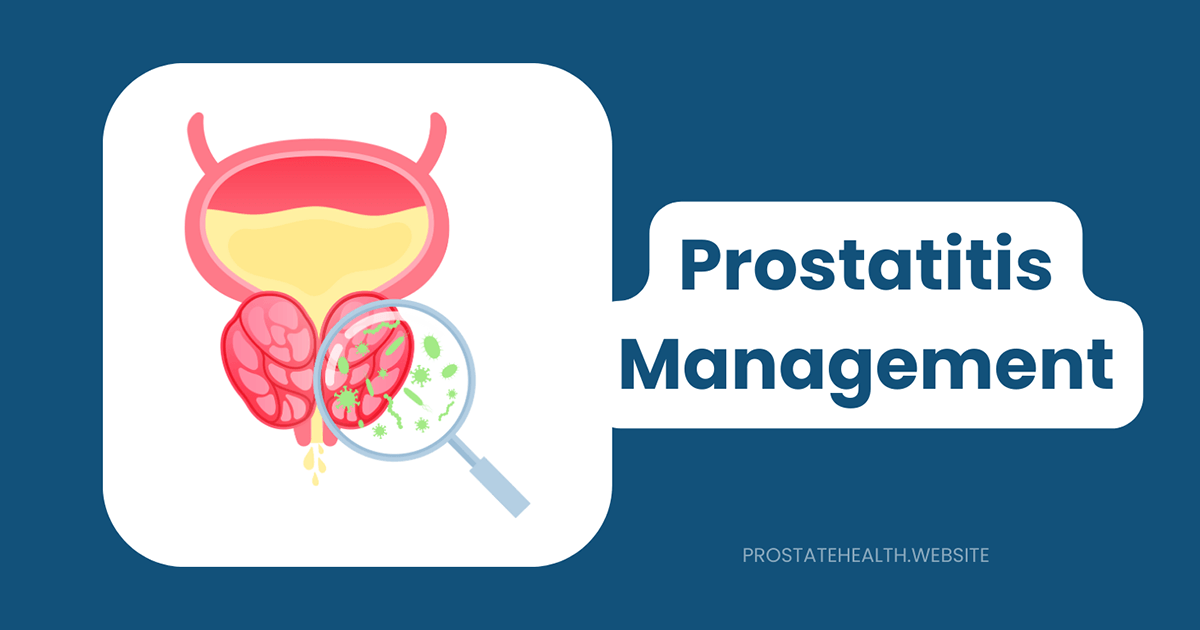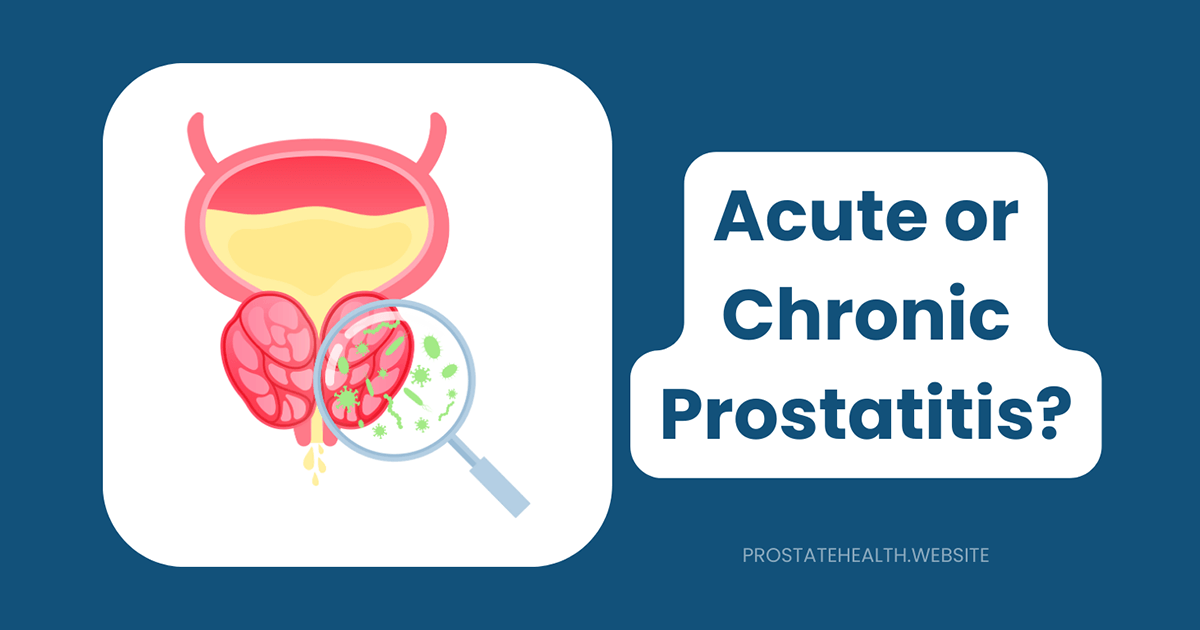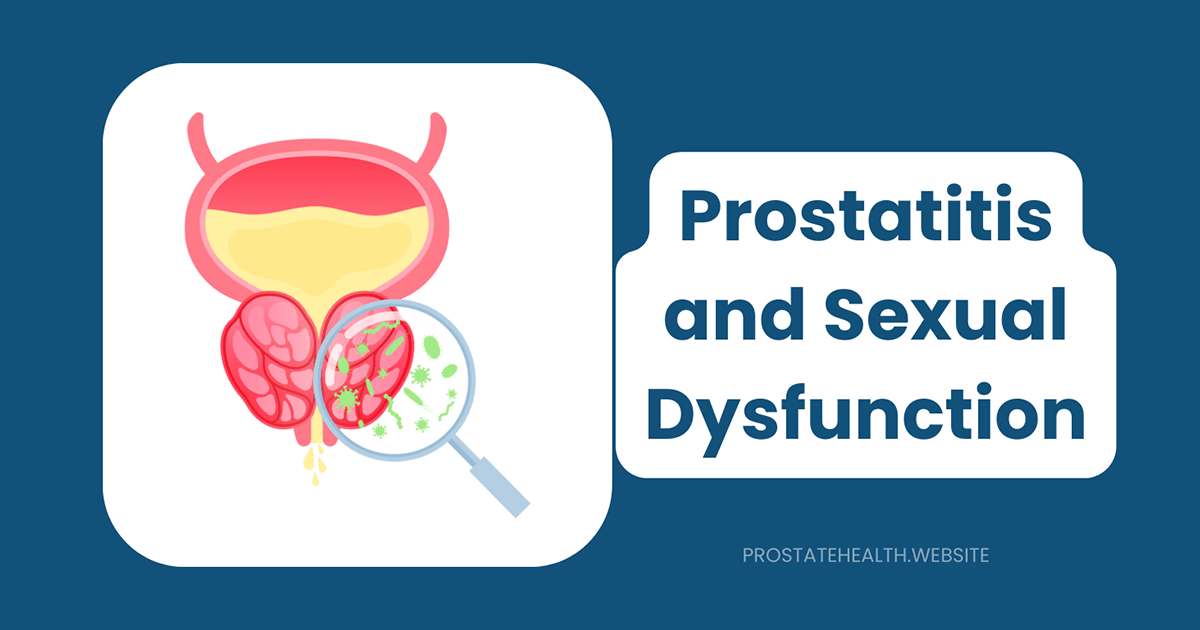BPH Timeline: What to Expect as You Age
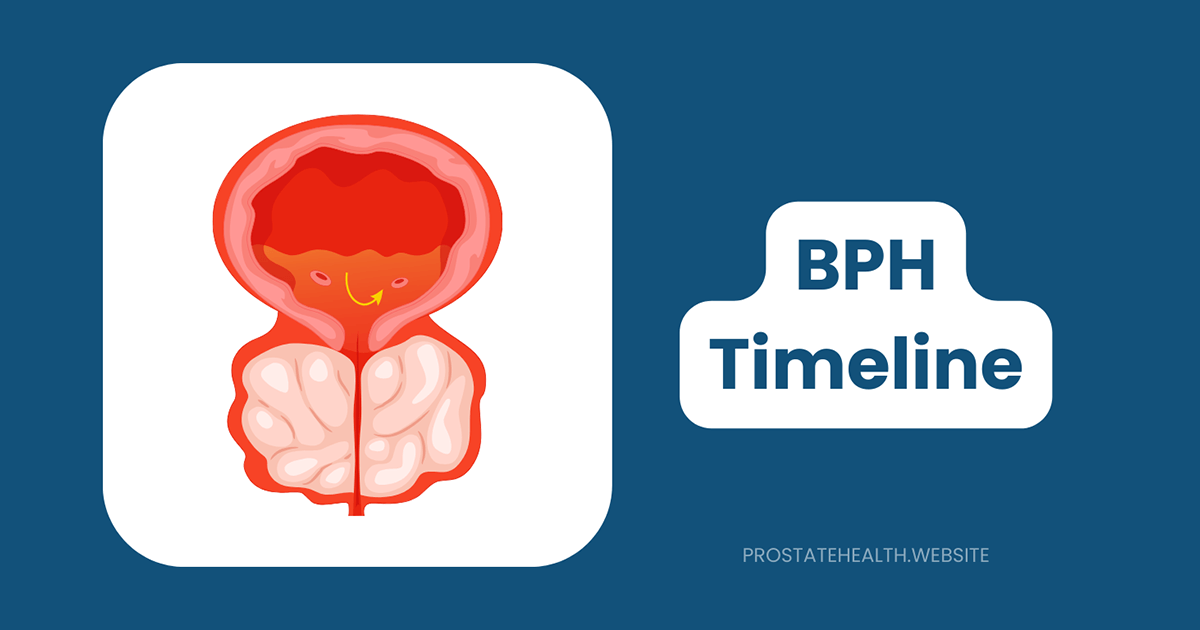
Benign Prostatic Hyperplasia (BPH)—commonly known as an enlarged prostate—is one of the most common health conditions men face as they age. Yet despite its prevalence, many men remain uncertain about what to expect as this condition progresses over time.
As someone who has guided countless men through their prostate health journeys, I’ve found that understanding the typical progression of BPH can help reduce anxiety and empower men to take proactive steps at each stage. Knowledge truly is power when it comes to managing this condition effectively.
In this comprehensive guide, we’ll explore what happens to your prostate as you age, how BPH typically progresses through different life stages, and what you can do to manage symptoms and potentially slow progression at each step along the way.
Understanding BPH: The Basics
Before diving into progression patterns, let’s clarify what BPH actually is:
Benign Prostatic Hyperplasia is the non-cancerous enlargement of the prostate gland. The prostate is a walnut-sized gland that surrounds the urethra (the tube that carries urine from the bladder out of the body). As the prostate enlarges, it can squeeze the urethra, causing urinary symptoms.
Key points to understand:
- BPH is not cancer and doesn’t increase your risk of prostate cancer
- It’s extremely common, affecting most men if they live long enough
- The condition progresses gradually over years or decades
- Progression rates vary significantly between individuals
Dr. James Thompson, urologist at Metropolitan Urology Center, explains: “BPH is essentially a normal part of the male aging process. Just as hair turns gray and skin develops wrinkles, the prostate tends to grow larger over time. However, the rate of growth and the impact on quality of life varies tremendously from one man to another.”
The Age Factor: BPH Prevalence by Decade
Recent global research from 2025 reveals striking statistics about BPH prevalence by age:
- 40s: Approximately 8% of men show histological evidence of BPH
- 50s: 50% of men have some degree of BPH
- 60s: 70% of men have BPH
- 70s and beyond: Over 80% of men have BPH
These numbers tell a clear story: the longer you live, the more likely you are to experience prostate enlargement. However, it’s important to note that not all men with BPH will develop bothersome symptoms or require treatment.
The Natural History of BPH: What Happens Over Time
Prostate Growth Patterns
The prostate undergoes two main growth phases during a man’s lifetime:
- First growth phase: During puberty, the prostate doubles in size
- Second growth phase: Begins around age 25 and continues throughout life
During this second phase, the prostate grows at an average rate of about 1.6% per year. However, this rate varies widely between individuals based on genetic factors, hormonal influences, and lifestyle elements.
Research shows that the prostate typically grows from:
- 20g (about the size of a walnut) in young adulthood
- 30g by age 50
- 40g+ by age 70
Symptom Progression Timeline
While prostate growth begins in early adulthood, symptoms typically don’t appear until the gland has grown large enough to affect urination. Here’s what most men experience by decade:
In Your 40s: Early Changes
- Prostate Changes: Microscopic tissue changes begin, but the prostate is usually not significantly enlarged
- Typical Symptoms: Most men have no symptoms, though some may notice mild changes like slightly longer time to empty the bladder
- What to Watch For: Establishing baseline urinary habits for future comparison
In Your 50s: Initial Symptoms
- Prostate Changes: The prostate typically grows to about 30g, with the growth often occurring in the transition zone that surrounds the urethra
- Typical Symptoms: Many men begin noticing mild symptoms:
- More frequent urination, especially at night
- Slight decrease in urinary stream force
- Occasional urgency
- What to Watch For: Symptoms that begin to interfere with daily activities or sleep
In Your 60s: Moderate Progression
- Prostate Changes: The prostate continues to enlarge, often reaching 40g or more
- Typical Symptoms: Symptoms typically become more noticeable:
- Consistent nocturia (nighttime urination)
- Weaker urinary stream
- Hesitancy (difficulty starting urination)
- Incomplete emptying sensation
- What to Watch For: Significant changes in urinary habits, impact on quality of life
In Your 70s and Beyond: Advanced Changes
- Prostate Changes: The prostate may continue growing or stabilize, with some men developing prostate volumes of 100g or more
- Typical Symptoms: Symptoms may become more pronounced:
- Multiple nighttime bathroom trips
- Very weak stream
- Straining to urinate
- Urinary retention (inability to empty the bladder completely)
- What to Watch For: Signs of complications like urinary tract infections or bladder stones
Robert, 72, shares his experience: “I first noticed changes in my mid-50s—getting up once at night, nothing major. By my mid-60s, I was getting up 2-3 times nightly and my stream was noticeably weaker. Now in my 70s, without treatment, I’d be in serious trouble. Medication has helped tremendously, but I wish I’d paid attention to the early warning signs.”
Key Factors That Influence BPH Progression
Not all men experience the same progression rate. Several factors influence how quickly BPH advances:
1. Genetics and Family History
Men with a family history of BPH tend to develop the condition earlier and experience more rapid progression. If your father or brothers have significant BPH, you’re more likely to follow a similar pattern.
2. Hormonal Factors
Dihydrotestosterone (DHT), a hormone derived from testosterone, plays a crucial role in prostate growth. Men who produce more DHT or whose prostates are more sensitive to its effects may experience faster progression.
3. Metabolic Health
Recent research has established strong links between metabolic syndrome and BPH progression:
- Obesity increases BPH risk by 1.5-3.5 times
- Diabetes is associated with larger prostate volumes and faster growth
- High blood pressure and abnormal cholesterol levels correlate with increased BPH severity
4. Lifestyle Factors
Several lifestyle elements may influence BPH progression:
- Sedentary behavior appears to worsen symptoms
- Certain dietary patterns (high in red meat and dairy, low in vegetables) may accelerate progression
- Alcohol and caffeine can exacerbate symptoms
5. Inflammation
Chronic inflammation in the prostate appears to drive tissue growth and symptom progression. Factors that increase inflammation, such as infections, poor diet, or autoimmune conditions, may accelerate BPH development.
Warning Signs: When BPH Progression Requires Attention
While some degree of BPH is normal with aging, certain signs indicate that the condition is progressing to a point that requires medical attention:
Red Flags for Accelerated Progression
- Acute urinary retention: Sudden inability to urinate
- High post-void residual: Significant urine remaining in the bladder after urination
- Bladder wall thickening: Indicates the bladder is working harder to overcome obstruction
- Rapidly worsening symptoms: Significant changes over months rather than years
- Complications: Development of bladder stones, recurrent UTIs, or kidney problems
Dr. Sarah Chen, urologist specializing in BPH management, emphasizes: “The concept of a ‘window of curability’ is important to understand. If BPH progresses too far without intervention, the bladder can become permanently damaged. This is why monitoring progression and seeking timely treatment is crucial.”
Potential Complications of Untreated BPH
If BPH progression continues without appropriate management, several complications can develop:
Urinary Retention
When the prostate blocks the urethra to the point that urination becomes impossible, emergency catheterization is required. About 1 in 10 men with untreated BPH will experience acute urinary retention within 5 years.
Bladder Damage
Over time, straining against an obstructed outlet causes the bladder muscle to thicken, forming pouches (diverticula) that can’t empty properly. Eventually, the bladder may become permanently weakened and unable to contract effectively.
Urinary Tract Infections
Incomplete bladder emptying creates an environment where bacteria can multiply, leading to recurrent infections that become increasingly difficult to treat.
Bladder Stones
Stagnant urine can form crystals that develop into bladder stones, causing pain, infection, and bleeding.
Kidney Damage
In severe cases, the back-pressure from chronic obstruction can damage the kidneys, potentially leading to kidney failure.
Michael, 68, shares his cautionary tale: “I ignored my symptoms for years, thinking it was just part of getting older. By the time I finally saw a doctor, I had developed bladder stones and my kidneys were starting to show signs of damage. I needed emergency surgery and now have some permanent bladder issues. Don’t make my mistake—address BPH symptoms early.”
Managing BPH Progression: Options at Each Stage
The good news is that effective management options exist for BPH at every stage of progression:
Early Stage Management (Mild Symptoms)
For men with early or mild BPH symptoms:
- Watchful waiting: Regular monitoring without active treatment
- Lifestyle modifications:
- Timed fluid intake (avoiding fluids before bedtime)
- Reducing alcohol and caffeine
- Double voiding (urinating, waiting a moment, then trying again)
- Pelvic floor exercises
Moderate Stage Management
As symptoms progress to moderate severity:
- Medications:
- Alpha-blockers (such as tamsulosin) to relax prostate muscles
- 5-alpha reductase inhibitors (such as finasteride) to shrink the prostate
- Combination therapy using both medication types
- PDE5 inhibitors (such as tadalafil) for men with concurrent erectile dysfunction
Advanced Stage Management
For advanced BPH or when medications aren’t effective:
- Minimally invasive procedures:
- Prostatic Urethral Lift (UroLift)
- Water vapor therapy (Rezūm)
- Prostate artery embolization (PAE)
- Transurethral microwave therapy (TUMT)
- Surgical options:
- Transurethral resection of the prostate (TURP)
- Laser procedures (HoLEP, PVP)
- Simple prostatectomy (for very large prostates)
James, 65, describes his treatment journey: “I started with lifestyle changes in my 50s, added medication in my early 60s, and recently had the UroLift procedure when medications weren’t enough. Each step has helped me manage the progression effectively. The key was staying in regular communication with my urologist and adjusting the approach as needed.”
Can You Slow BPH Progression?
While BPH progression is largely a natural part of aging, emerging research suggests several approaches may help slow its advancement:
Evidence-Based Approaches
- Maintain metabolic health: Managing weight, blood sugar, and cholesterol may slow progression
- Regular exercise: Studies show physically active men have slower BPH progression
- Anti-inflammatory diet: Rich in vegetables, fruits, healthy fats, and plant proteins
- Early medication: 5-alpha reductase inhibitors have been shown to reduce prostate volume and slow symptom progression
- Manage chronic conditions: Controlling diabetes, hypertension, and other chronic diseases
Dr. Robert Williams, researcher in men’s health, notes: “The link between metabolic health and BPH progression is one of the most important discoveries in recent years. Men who maintain healthy weight, exercise regularly, and eat an anti-inflammatory diet appear to experience slower progression and less severe symptoms.”
When to See a Doctor About BPH
Knowing when to seek medical advice is crucial for managing BPH progression effectively:
Schedule a Routine Evaluation If:
- You’re over 50 and haven’t had a baseline prostate assessment
- You notice gradual changes in urinary habits
- You have a family history of significant prostate issues
- You’re experiencing mild to moderate urinary symptoms
Seek Prompt Medical Attention If:
- You suddenly cannot urinate at all
- You have blood in your urine
- You experience painful urination
- You have recurrent urinary tract infections
- Your symptoms are rapidly worsening
Monitoring BPH Progression: What to Expect
If you’ve been diagnosed with BPH, your doctor will likely recommend regular monitoring to track progression:
Typical Monitoring Protocol
- Annual or bi-annual urologist visits to assess symptom changes
- International Prostate Symptom Score (IPSS) questionnaires to objectively track symptoms
- Physical examinations including digital rectal exams to assess prostate size
- Uroflowmetry to measure urine flow rate
- Post-void residual (PVR) measurements to check for complete bladder emptying
- Prostate-specific antigen (PSA) blood tests to rule out prostate cancer
Conclusion: Taking Control of Your Prostate Health Journey
BPH progression is a normal part of aging for most men, but understanding what to expect at each stage allows you to take a proactive approach to management. By recognizing the typical patterns of progression, identifying risk factors that might accelerate your personal progression, and knowing when to seek medical attention, you can minimize the impact of BPH on your quality of life.
Remember that effective treatments exist for all stages of BPH, and early intervention often provides the best outcomes. Rather than viewing BPH as an inevitable burden of aging, consider it a manageable condition that, with proper attention, need not significantly impact your enjoyment of life.
As you navigate your prostate health journey, maintain open communication with your healthcare providers, stay informed about new treatment options, and prioritize the lifestyle factors that support overall prostate health. With this approach, you can face BPH progression with confidence rather than concern.
Frequently Asked Questions About BPH Progression
While BPH tends to be progressive, the rate varies significantly between individuals. Some men experience steady progression, others have periods of stability or even slight improvement, and some have rapid progression. Regular monitoring helps identify your personal pattern.
Most men should begin baseline prostate health monitoring around age 50, coinciding with prostate cancer screening discussions. However, if you have a family history of BPH or begin experiencing urinary changes earlier, consider starting conversations with your healthcare provider in your 40s.
True spontaneous resolution of BPH is rare. However, symptoms may fluctuate due to factors like fluid intake, medication effects, or temporary inflammation. The underlying prostate enlargement typically doesn’t reverse without specific treatment.
On average, the prostate grows about 1.6% per year, but this varies widely. Symptom progression is even more variable—some men have minimal symptom changes for decades, while others experience significant worsening over just a few years. Your doctor can help assess your individual progression rate.

